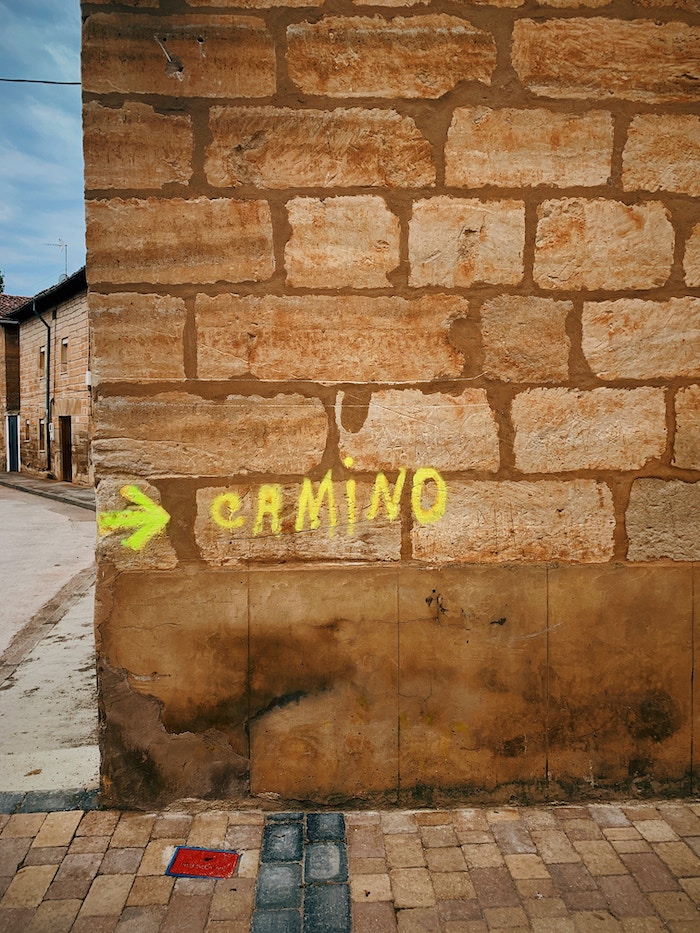A version of this article previously appeared on EcoCult.
New Orleans is unlike any other city I’ve ever visited. The word “fecund” comes to mind. New Orleans was built on a swamp – its tropical, hot, humid air and French influence give it an air of a jubilant island colony wedged into the conservative foreign country that is the South.
The porches of the colorful, off-kilter houses sprout ornamentation like orchids. There’s a thick, undergrowth of subcultures: goth kids, Vietnamese food, voodoo and witchcraft, Black Indians, vast cemeteries with ornate mausoleums, a devotion to alcohol in all forms all the time, bluegrass and bounce music. It’s a place of contradictions: there are huge mansions, yet 50% of the population lives in poverty. It’s tolerant and over the top, inclusive and impressive. You can go to New Orleans and be yourself, whether you’re a southern girl in a sundress, or a queer artist of color looking to experiment. And then there is its dark past to reckon with: slaves flowing through its port from Africa–and the fresh wounds of Hurricane Katrina.

For a thoughtful tourist to New Orleans, it’s less about expressly “eco-friendly” activities, and more about learning about social justice issues, experiencing the music culture, and digging into the burgeoning farm-to-table food scene.
At a time when everywhere – Portland, Seattle, Minneapolis, all of Europe, Japan – is starting to look like Brooklyn, New Orleans still feels like its manic, beautiful, cosmopolitan, pockmarked, colorful, irreverent self.
“New Orleans has a distinctive sense of place that has drawn people to it for generations, for 300 years,” New Orleans native and award-winning developer Sean Cummings told me, as we had a drink in his boutique hotel, International House. (His father also founded the Whitney Plantation.)
I also would like to say thank you to others who so generously provided recommendations for my stay in New Orleans: reader Margaret Lovejoy, Madi Holtzman, Stephanie Hepburn of the sustainable online store Good Cloth, Sara Weinreb of IMBY, and a dozen more friends, all ensuring I certainly would not be bored during my trip.
Stay
There’s not really an “eco-friendly” hotel in New Orleans. Search for one, and you’ll find demi-green initiatives from corporate hotels. I instead recommend you stay at a locally owned hotel with a strong sense of place. A friend recommended Ace Hotel, which is a cool franchise, but… well, you can find an Ace Hotel in any city, including New York. “A Brooklyn/Portland-ization like the Ace… I get it, but it’s alien to New Orleans,” Cummings told me. “If I had a fixed number of nights, I wouldn’t go to those places. There are few places in America that still have this authentic sense of place. So go to the places that speak of that.”
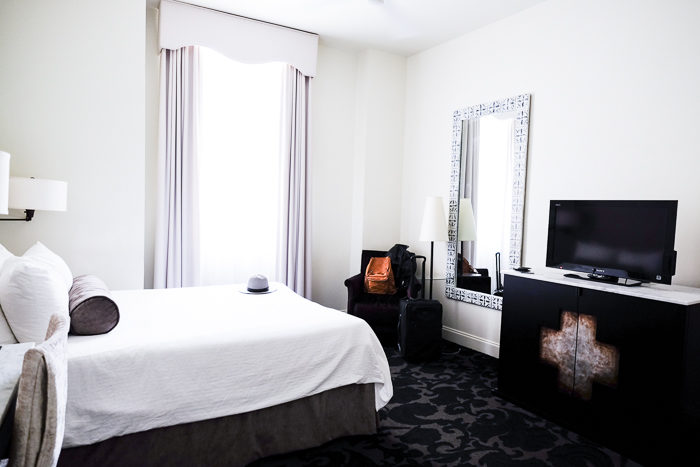
International House – Central Business District
This cute and modern hotel is where I stayed, and is a great way to make sure your tourist dollars stick around New Orleans and do a little good. It’s run by women – all the managers and seven of the ownership team are women – and is also the first hotel to be partly owned by black women. Plus, it has a profit sharing program that all the employees participate in. The lobby bar sources ingredients locally, including sorrento lemons from its own citrus grove nearby, and makes its own limoncello. Most of the furniture is made locally by artists and furniture makers, and seven times a year they celebrate local traditions by switching out the lobby artwork. On the sustainable side, the International House has a recycling program for soaps, used nontoxic paint, and just switched in March to an environmentally friendly cleaning system called PathoSans.
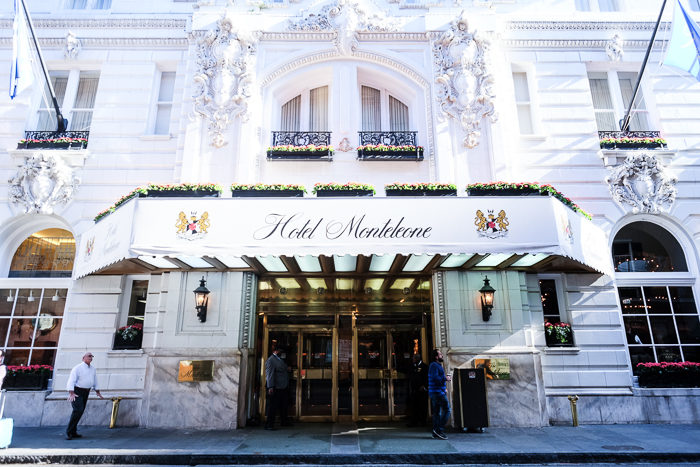

Hotel Monteleone – French Quarter
This historic, 130-year-old hotel in the French Quarter has a variety of green initiatives, including donating leftover food to a local non-profit organization and linens to charities and shelters, eschewing disposable drinking cups for glass cups and pitchers, bike storage for employees and guests, in-room digital thermostats, eco-friendly cleaning supplies, and more, earning it 3 Green Keys.
Soniat House – French Quarter
Created out of adjoining French quarter residences, this luxury hotel incorporates modern amenities like in-suite jacuzzis and a spa into the historic structure. Each of the 31 accommodations is individually decorated and furnished with period antiques. It is one of Fodor’s Choice Top 20 hotels in the world.
Claiborne Mansion – Faubourg-Marigny
Enjoy a healthy gluten-free and vegan breakfast surrounded by 18th-century decor in this historic mansion in the Faubourg-Marigny neighborhood, right next to the French Quarter. The three-quarter acre grounds include a 40-foot saltwater pool and landscaped courtyard with a gazebo and citrus grove.
Do



Lower 9th Ward Rebirth Bike Tour – Lower 9th Ward
I wanted to see the Make It Right houses, eco-friendly, storm resilient homes built after Hurricane Katrina almost wiped the Lower 9th Ward off the map. But I wasn’t sure how to do that. I certainly didn’t want to take a bus tour. This bike tour offered a great alternative. Led by a native New Orleanian, we headed out from the Faubourg-Marigny on cruiser bicycles down to see the spot where a barge punched through the levee, pouring water into the neighborhood. From there, we biked up a small hill overlooking the river to survey the city and learn a short history, then down into the neighborhood to visit with the locals who are revitalizing the area like a small urban farm, learn about how canals contribute to the slow dying of the swampland, and see the Make It Right houses. In the winter sun, the quiet and half-empty neighborhood felt like a dreamy, dying seaside town. It was an odd feeling. I would put this unique experience at the top of your list of things to do.
Voodoo Walking Tour – French Quarter
This religion, an amalgamation of tribal African religion and Catholicism, is a crucial part of New Orleans history, and very much required reading if you want to understand the city. At first, I was confused by the fact that our tour was led by a white lady, until she explained that she’s close friends with many voodoo practitioners, has attended many voodoo events, and is also a practicing witch. Crucially, she was easily able to answer all of our questions. We learned about voodoo’s history, the most famous high priestess of voodoo, Marie Laveau, about how it’s currently practiced, and visited a voodoo shop at the end, where I picked up some potent and fragrant voodoo oils.

Backstreet Cultural Museum – Tremé
Located in an unassuming shotgun house, this tiny museum features the stunningly ornate Black Indian Mardi Gras costumes. This tradition is unique to New Orleans, so I wouldn’t miss it!
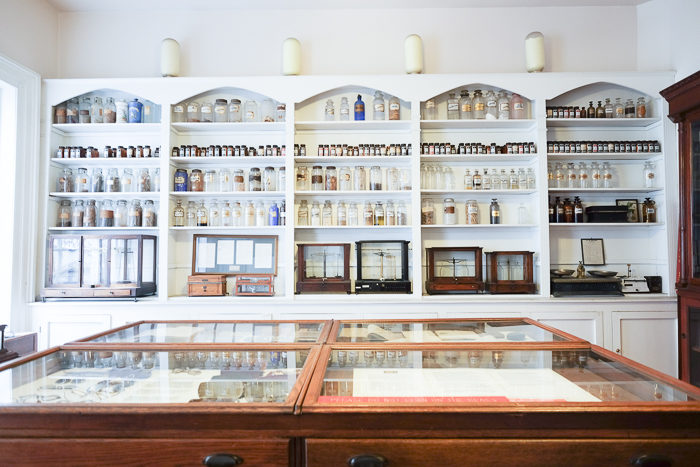
Pharmacy Museum – French Quarter
A quaint, historical pharmacy that recreates the medical experience around the turn of the century. You might be shocked by the history of pharmacy drugs – we were all but poisoned by arsenic, lead, and opioid mixtures back in the day. And then you realize, oh yeah, the opioid epidemic.
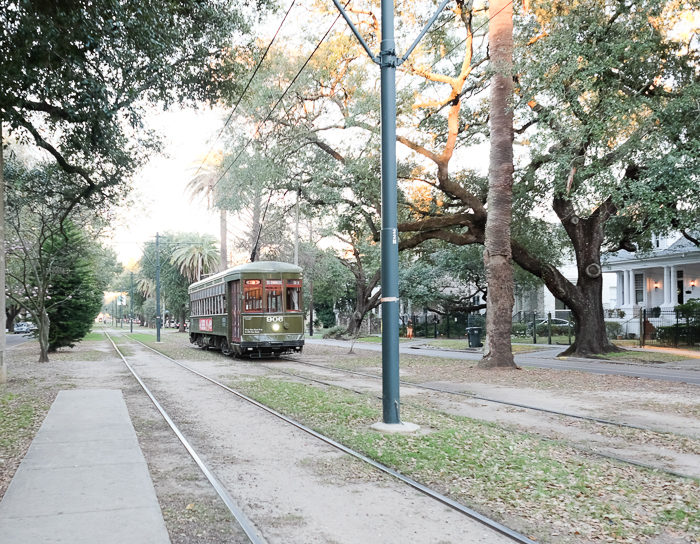

Take a ride on a streetcar – Grab a cocktail and hop on the St. Charles trolley line, which rumbles past a long line of beautiful old mansions. I recommend you bring a reusable opaque to-go coffee mug down with you to New Orleans for just this purpose. The bars in New Orleans will give you a plastic to-go cup, but with downtown New Orlean’s recycling being almost non-existent, you might feel guilty about that. So order a drink regular, and then dump it in your closed cup to go. Another benefit is that you can take it on the trolleys – they won’t let you on with an open plastic cup of alcohol.

A Cemetery – New Orleans cemeteries are famous for their elaborate mausoleums, built above ground because of the wet, swampy ground. You can visit any cemetery, sign up for a tour, or just wander around by yourself.

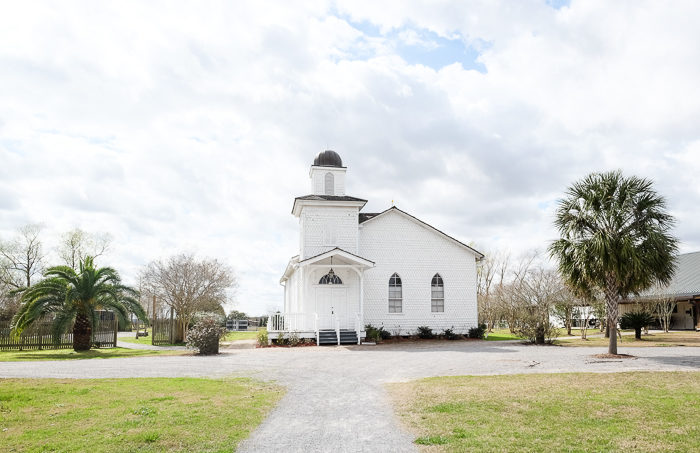
The Plantations – Outside of New Orleans
Reserve a whole day, and take a Lyft out to the plantation area to visit three different plantations for three very different experiences. First, visit the Whitney Plantation and Museum of Slavery, which has been called “America’s Auschwitz.” Instead of painting a flowery picture of plantation life in a grand mansion, it focuses on the horrors of slavery with moving memorials to the slaves that passed through New Orleans on their way to being sold. Nearby, visit the Laura Plantation, which can give you an accurate picture of both owner and slavery life, through the eyes of Laura Locoul Gore, who recorded 100 years of plantation life in her journal. And if you want to see a grand mansion, you can visit the Oak Alley plantation.
Read more about what to do & where to eat in New Orleans at EcoCult.
Have you been to New Orleans? What are your favorite spots?
Also by Alden: Glam Girls’ Trips to Nashville Is a Thing Now. Here’s How To Make It Ecofriendly
Here’s How to *Actually* Do Tulum, Mexico Like A Green Traveler
Related: Smurf Lattes & Other Eats That Prove Melbourne Vegan Scene Is Bananas
Get more like this–sign up for our newsletter for exclusive inspirational content!
__
Photo: Alden Wicker

